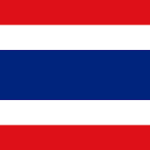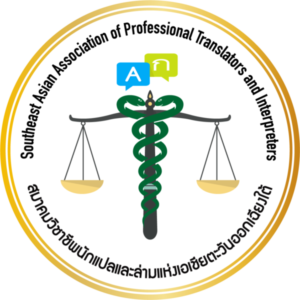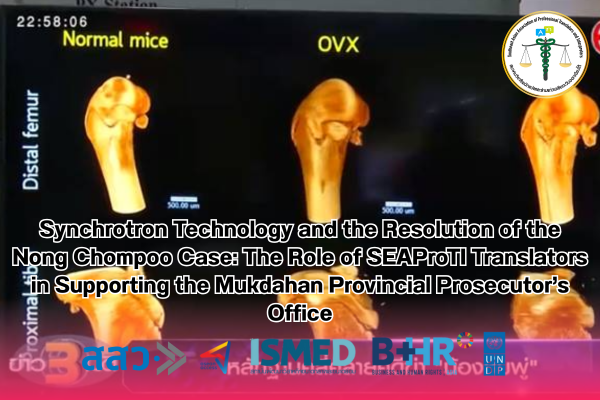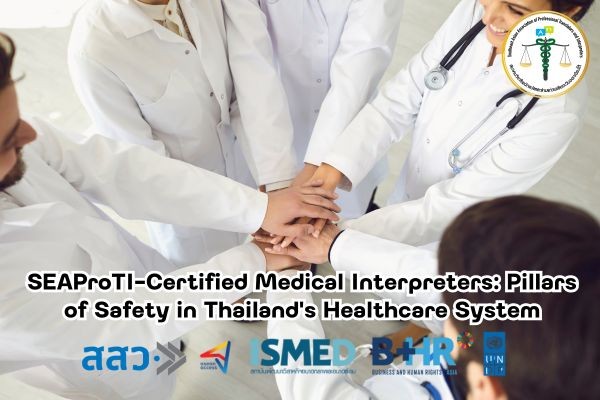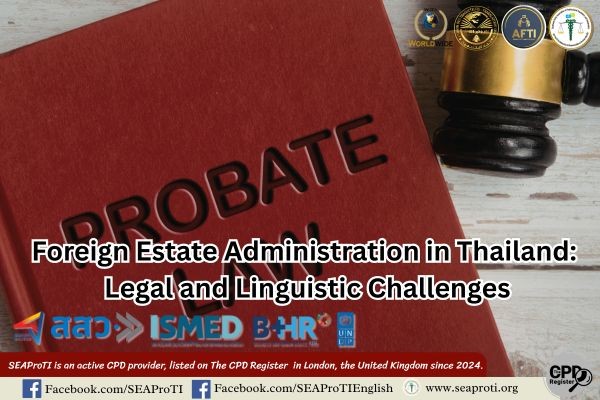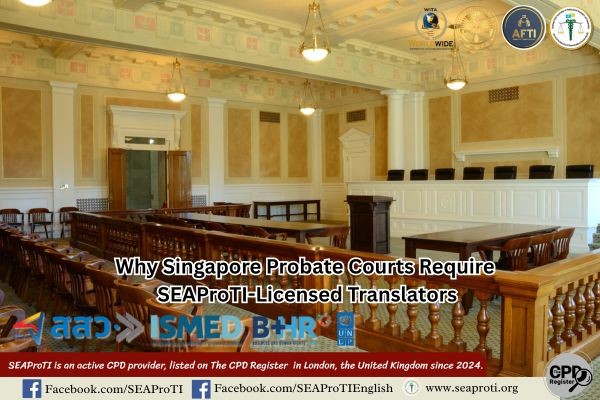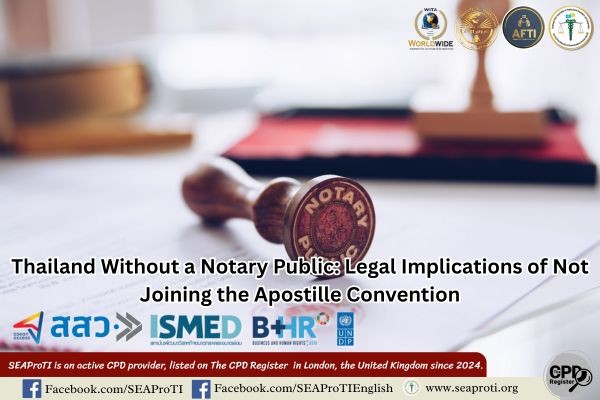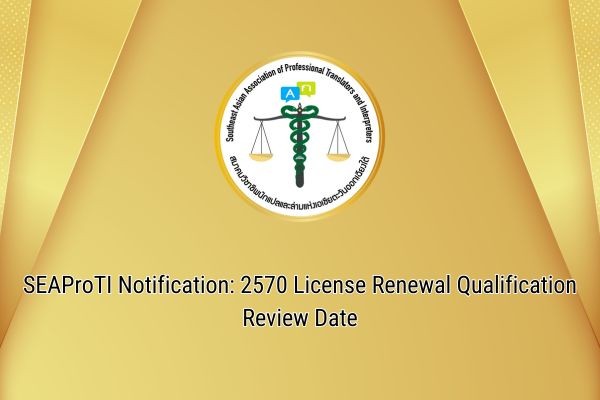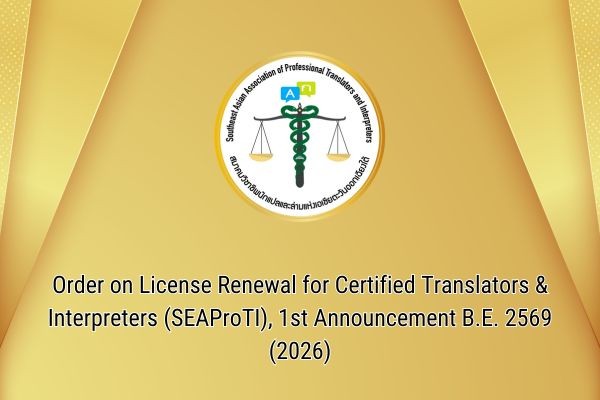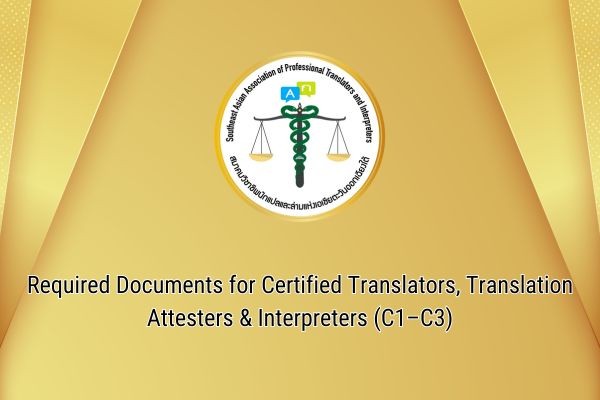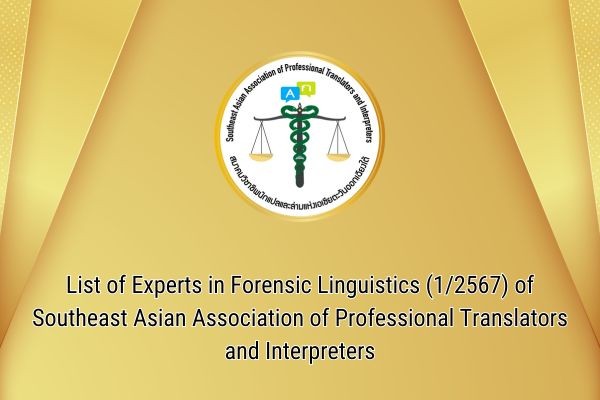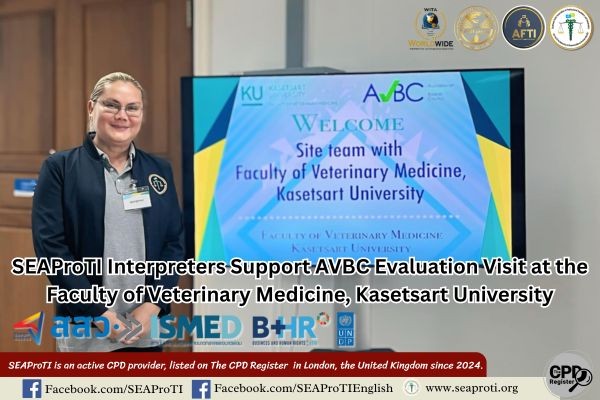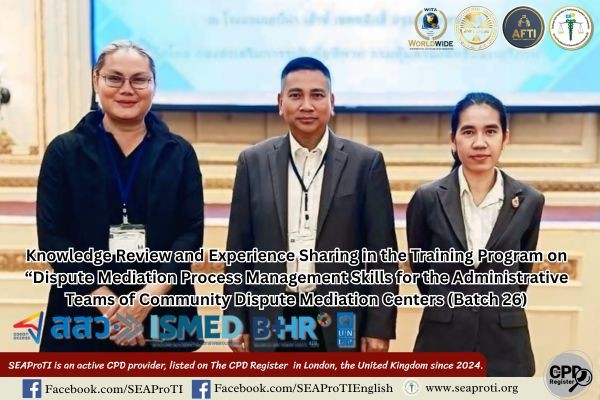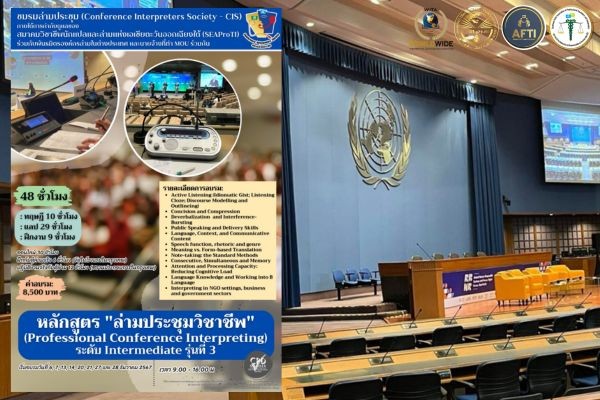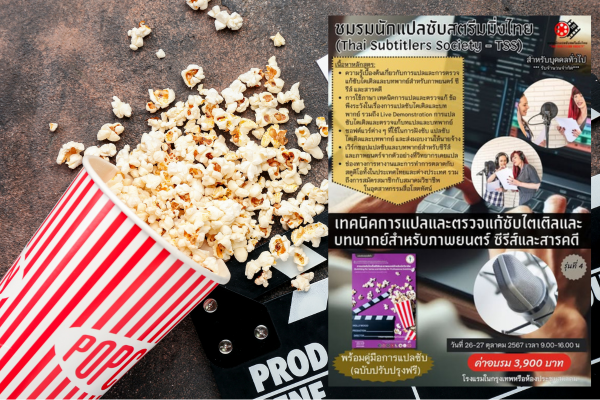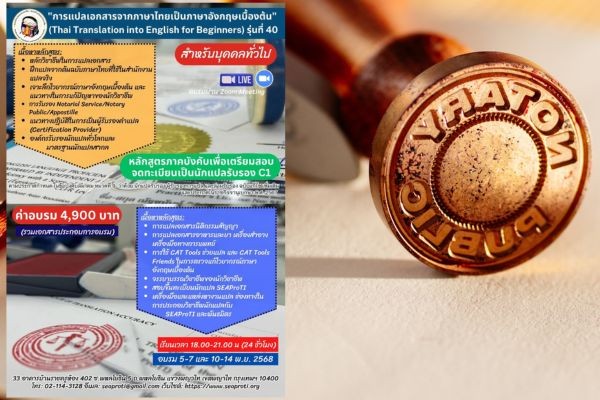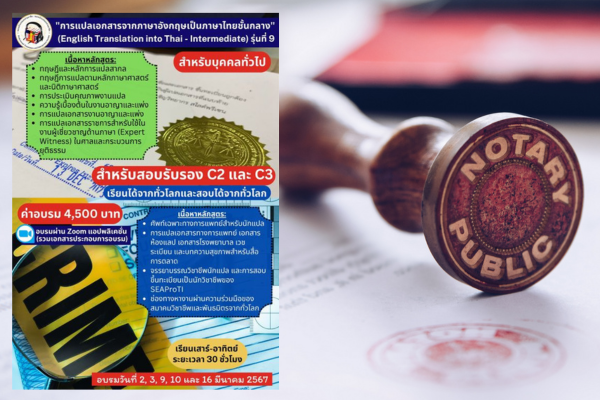Synchrotron Technology and the Resolution of the Nong Chompoo Case:
The Role of SEAProTI’s Forensic Translations
Author: Wanitcha Sumanat, President, Southeast Asian Association of Professional Translators and Interpreters
17 August 2025, Bangkok – The death of a three-year-old girl known as “Nong Chompoo” in Mukdahan Province became one of the most closely watched cases in Thailand. Due to the complexity of the evidence and societal pressure, authorities had to rely on advanced scientific methods in the investigation. One of the most important tools was the synchrotron light source, which enabled the examination of hair and rootless hair at the nanometer level to establish possible links to suspects (Ishida, Sano, & Noda, 2013; Uemura, Takahashi, & Yamada, 2012). Although the technology had once been questioned for its accuracy, it has now developed to play a crucial role in international forensic science (Cotte, Salomé, Metrich, Susini, & Van Elslande, 2016).
Beyond scientific progress, accurate and reliable communication also plays a key role in ensuring that scientific findings can be effectively applied in judicial proceedings. Particularly in cases under intense public scrutiny and international media coverage, translators from the Southeast Asian Association of Professional Translators and Interpreters (SEAProTI) play a vital role in translating documents and reports related to synchrotron technology. Their work ensures alignment with both scientific and legal standards, thereby supporting the Mukdahan Provincial Prosecutor’s Office and fostering accurate understanding among the public and the international community (Hale, 2015; Mikkelson, 2017).
The Nong Chompoo Case and Synchrotron Evidence
Police collected a total of 16 items of physical evidence from the crime scene, including 36 strands of hair approximately one centimeter in length. Among them were three rootless hairs, which could not be tested using conventional DNA methods. Subjecting these samples to synchrotron light analysis marked the application of cutting-edge technology to one of Thailand’s most high-profile criminal cases.
The synchrotron can analyze hair at a structural and elemental level with far greater precision than ordinary X-rays. This means that even without hair roots, it is still possible to produce forensic evidence admissible as supporting material in judicial processes (Uemura et al., 2012). The technology’s ability to generate three-dimensional tomography and analyze elemental traces at the atomic level makes it particularly valuable for cross-comparing forensic findings with other evidence.
Reliability and Controversy
Although synchrotron analysis has been praised for its precision, its credibility was once questioned, especially in hundreds of forensic cases where results may have been misinterpreted or overstated. Today, however, advancements in software and analytical techniques have significantly improved reliability, making synchrotron results more admissible as supporting forensic evidence (Cotte et al., 2016).
In other jurisdictions such as Japan, synchrotron light technology has been used in complex poisoning cases, where it enabled investigators to identify perpetrators from just a few strands of hair left at the scene—even years after the crime occurred (Ishida et al., 2013). This demonstrates the value of synchrotron technology as an indispensable tool in modern forensic science.
The Role of SEAProTI Translators
Presenting synchrotron evidence to both the public and the courts requires accurate translation and precise communication. SEAProTI translators therefore play an essential role in supporting the Mukdahan Provincial Prosecutor’s Office through:
- Translating scientific documents – Rendering synchrotron test reports from highly technical scientific language into clear, comprehensible texts for prosecutors and judges.
- Translating news and reports – Producing Thai-language and international-language materials that meet legal and scientific standards, ensuring clarity in communication with domestic agencies and international organizations (Ng, 2009).
- Careful choice of legal terminology – Reducing public misunderstanding by avoiding distorted or overstated terms. For example, replacing “not admissible” with “admissible as supporting evidence,” reflecting the proper evidentiary status of scientific findings in court (Hale, 2015; Mikkelson, 2017).
Conclusion
The Nong Chompoo case demonstrates how advanced science can be integrated into the judicial process, with synchrotron technology at the forefront of evidence analysis. Despite past controversies, the synchrotron has proven increasingly reliable and valuable in forensic science.
Equally important is the role of SEAProTI translators, who ensure that complex scientific findings are communicated effectively and credibly to prosecutors, the Thai judiciary, and the international community. Through accurate, faithful, and legally aligned translation, SEAProTI translators strengthen the credibility of forensic evidence in the pursuit of justice.
References
- Cotte, M., Salomé, M., Metrich, N., Susini, J., & Van Elslande, E. (2016). Applications of synchrotron-based micro-imaging techniques to the study of ancient and historical materials. Comptes Rendus Physique, 17(5), 556–568. https://doi.org/10.1016/j.crhy.2016.02.013
- Hale, S. B. (2015). Community interpreting. Palgrave Macmillan.
- Ishida, M., Sano, M., & Noda, T. (2013). Synchrotron radiation X-ray fluorescence analysis of human hair in forensic science. X-Ray Spectrometry, 42(3), 179–184. https://doi.org/10.1002/xrs.2474
- Mikkelson, H. (2017). The role of the court interpreter in the judicial process. Translation & Interpreting, 9(1), 26–40. https://doi.org/10.12807/ti.109201.2017.a03
- Ng, E. N. S. (2009). Legal interpreting in Hong Kong: Challenges and prospects. Interpreting, 11(2), 120–147. https://doi.org/10.1075/intp.11.2.02ng
- Uemura, K., Takahashi, K., & Yamada, T. (2012). Elemental analysis of forensic samples using synchrotron radiation. Forensic Science International, 222(1–3), 361–365. https://doi.org/10.1016/j.forsciint.2012.06.007
About Certified Translators, Translation Certification Providers, and Certified Interpreters of SEAProTI
The Southeast Asian Association of Professional Translators and Interpreters (SEAProTI) has formally established qualifications and criteria for registered members as Certified Translators, Translation Certification Providers, and Certified Interpreters, published in the Royal Thai Government Gazette, Book 141, Part 66 Ng, Page 100, dated 25 July 2024, by the Secretariat of the Cabinet, Office of the Prime Minister of the Kingdom of Thailand. Full text available: The Royal Thai Government Gazette
SEAProTI is the first professional association in Thailand and Southeast Asia to institute a certification system for Certified Translators, Translation Certification Providers, and Certified Interpreters.
Head Office: Baan Rajakru Building, Room 402, No. 33, Soi Phaholyothin 5, Phaholyothin Road, Phaya Thai Subdistrict, Phaya Thai District, Bangkok 10400 Email: hello@seaproti.com | Tel: (+66) 2-114-3128 (Office Hours: Monday–Friday, 09:00–17:00)
เครื่องซินโครตรอนกับการคลี่คลายคดีน้องชมพู่: บทบาทของนักแปล SEAProTI ในการสนับสนุนงานอัยการจังหวัดมุกดาหาร
ผู้แต่ง วณิชชา สุมานัส นายกสมาคมวิชาชีพนักแปลและล่ามแห่งเอเชียตะวันออกเฉียงใต้
17 สิงหาคม 2568, กรุงเทพมหานคร – คดีการเสียชีวิตของเด็กหญิงวัยสามขวบ “น้องชมพู่” ที่จังหวัดมุกดาหาร ได้กลายเป็นหนึ่งในคดีที่ประชาชนทั้งประเทศเฝ้าติดตาม ด้วยความซับซ้อนของพยานหลักฐานและแรงกดดันจากสังคม ทำให้หน่วยงานที่เกี่ยวข้องจำเป็นต้องอาศัยวิทยาศาสตร์สมัยใหม่เข้ามาช่วยในการคลี่คลาย โดยหนึ่งในเครื่องมือสำคัญคือ เครื่องกำเนิดแสงซินโครตรอน ซึ่งสามารถตรวจสอบเส้นผมและเส้นขนไร้รากในระดับนาโนเมตร เพื่อหาข้อมูลเชื่อมโยงกับผู้ต้องสงสัย (Ishida, Sano, & Noda, 2013; Uemura, Takahashi, & Yamada, 2012) แม้เทคโนโลยีดังกล่าวจะเคยถูกตั้งคำถามในอดีตเกี่ยวกับความแม่นยำ แต่ปัจจุบันได้พัฒนาไปจนมีบทบาทสำคัญในงานนิติวิทยาศาสตร์ระดับสากล (Cotte, Salomé, Metrich, Susini, & Van Elslande, 2016)
นอกจากความก้าวหน้าทางวิทยาศาสตร์แล้ว การสื่อสารข้อมูลที่ถูกต้องและน่าเชื่อถือก็เป็นอีกปัจจัยหนึ่งที่ช่วยให้ผลการตรวจสอบทางวิทยาศาสตร์สามารถนำมาใช้ในกระบวนการยุติธรรมได้อย่างมีประสิทธิภาพ โดยเฉพาะในคดีที่ถูกจับตามองจากสาธารณชนและสื่อต่างประเทศ นักแปลจากสมาคมวิชาชีพนักแปลและล่ามแห่งเอเชียตะวันออกเฉียงใต้ (SEAProTI) จึงมีบทบาทสำคัญในการ แปลเอกสารและข่าวสารที่เกี่ยวข้องกับซินโครตรอน ให้สอดคล้องกับมาตรฐานทั้งทางวิทยาศาสตร์และกฎหมาย เพื่อสนับสนุนการทำงานของอัยการจังหวัดมุกดาหาร และเพื่อสร้างความเข้าใจอันถูกต้องแก่สาธารณชนและประชาคมโลก (Hale, 2015; Mikkelson, 2017)
คดีน้องชมพู่กับหลักฐานซินโครตรอน
ตำรวจได้รวบรวมพยานหลักฐานทั้งหมด 16 ชิ้นจากที่เกิดเหตุ โดยมีเส้นผมและเส้นขนจำนวน 36 เส้นที่มีความยาวประมาณ 1 เซนติเมตร ซึ่งรวมถึงเส้นขนไร้ราก 3 เส้นที่ไม่สามารถตรวจหาดีเอ็นเอได้ด้วยวิธีมาตรฐาน การนำเส้นขนเหล่านี้เข้าสู่การตรวจด้วยแสงซินโครตรอนถือเป็นการประยุกต์ใช้เทคโนโลยีระดับโลกกับคดีอาญาที่สำคัญของไทย
เครื่องซินโครตรอนสามารถตรวจสอบในระดับโครงสร้างและองค์ประกอบธาตุได้ละเอียดกว่าการใช้รังสีเอกซเรย์ทั่วไปหลายเท่า ทำให้แม้จะไม่มีรากผม ก็ยังสามารถนำมาใช้เป็นหลักฐานเชื่อมโยงในกระบวนการยุติธรรมได้ (Uemura et al., 2012). ความสามารถในการสร้างภาพสามมิติ (3D tomography) และการวิเคราะห์ร่องรอยธาตุในระดับอะตอม ทำให้ได้ข้อมูลที่เป็นประโยชน์ต่อการเปรียบเทียบและเชื่อมโยงกับพยานหลักฐานอื่นในคดี
ความน่าเชื่อถือและข้อถกเถียง
แม้ว่าเทคโนโลยีซินโครตรอนจะถูกยกย่องว่ามีความแม่นยำสูง แต่ก็เคยถูกตั้งคำถามในอดีต โดยเฉพาะในคดีนิติวิทยาศาสตร์หลายร้อยคดีที่ผลการตรวจอาจถูกตีความเกินขอบเขตหรือใช้เป็นหลักฐานเกินความสามารถที่แท้จริง อย่างไรก็ตาม ปัจจุบันซอฟต์แวร์และเทคนิคการตรวจสอบได้รับการพัฒนา ทำให้มีความแม่นยำมากขึ้นและสามารถนำมาใช้เป็นหลักฐานประกอบในกระบวนการยุติธรรมได้อย่างมั่นใจ (Cotte et al., 2016).
ในบางประเทศ เช่น ญี่ปุ่น เครื่องซินโครตรอนถูกใช้ในคดีวางยาพิษที่ซับซ้อน และสามารถระบุตัวผู้กระทำผิดได้จากเส้นขนเพียงไม่กี่เส้นที่ตกค้างอยู่ในที่เกิดเหตุ แม้เวลาจะผ่านไปนานหลายปี (Ishida et al., 2013). สิ่งนี้แสดงให้เห็นว่าเทคโนโลยีดังกล่าวได้กลายเป็นเครื่องมือที่มีคุณค่าสำหรับนิติวิทยาศาสตร์ยุคใหม่
บทบาทของนักแปล SEAProTI
การนำเสนอผลการตรวจซินโครตรอนต่อสาธารณชนและในกระบวนการยุติธรรมจำเป็นต้องอาศัย การแปลเอกสารและการสื่อสารที่ถูกต้อง นักแปล SEAProTI จึงมีบทบาทสำคัญในการสนับสนุนงานอัยการจังหวัดมุกดาหาร โดยทำหน้าที่ดังนี้
- การแปลเอกสารทางวิทยาศาสตร์ – ถ่ายทอดรายงานผลตรวจซินโครตรอนจากภาษาวิทยาศาสตร์ที่ซับซ้อนให้อัยการและผู้พิพากษาเข้าใจได้ชัดเจน
- การแปลข่าวสารและรายงานระหว่างประเทศ – จัดทำเอกสารภาษาไทย เพื่อสื่อสารกับองค์กรในประเทศ ด้วยมาตรฐานวิทยาศาสตร์และกฎหมายที่เป็นกลาง (Ng, 2009)
- การเลือกถ้อยคำทางกฎหมายอย่างระมัดระวัง – นักแปล SEAProTI ช่วยลดความเข้าใจผิดของสาธารณชน โดยหลีกเลี่ยงการใช้ถ้อยคำที่อาจบิดเบือนหรือสร้างความเข้าใจเกินจริง เช่น การแทนที่คำว่า not admissible ด้วย “ใช้ประกอบหลักฐาน” เพื่อสะท้อนสถานะของหลักฐานทางวิทยาศาสตร์ในศาลอย่างถูกต้อง (Hale, 2015; Mikkelson, 2017)
บทสรุป
คดีน้องชมพู่เป็นตัวอย่างที่ชัดเจนของการบูรณาการ วิทยาศาสตร์ขั้นสูง เข้ากับ กระบวนการยุติธรรม โดยมีเครื่องซินโครตรอนเป็นหัวใจสำคัญในการวิเคราะห์หลักฐานที่ละเอียดอ่อน แม้จะเคยถูกตั้งคำถามในอดีต แต่ปัจจุบันเทคโนโลยีนี้ได้พิสูจน์ศักยภาพที่ก้าวหน้ามากขึ้นในงานนิติวิทยาศาสตร์
ในอีกมิติหนึ่ง บทบาทของนักแปล SEAProTI ก็เป็นกลไกสำคัญที่ทำให้ผลวิทยาศาสตร์เหล่านี้สามารถนำเสนอได้อย่างมีประสิทธิภาพและน่าเชื่อถือ ทั้งต่ออัยการจังหวัดมุกดาหาร ศาลไทย และประชาคมโลก การแปลที่ถูกต้อง เที่ยงตรง และสอดคล้องกับมาตรฐานกฎหมายและวิทยาศาสตร์จึงกลายเป็น ส่วนเสริมความน่าเชื่อถือของหลักฐานทางวิทยาศาสตร์ ในการแสวงหาความยุติธรรม
เอกสารอ้างอิง
- Cotte, M., Salomé, M., Metrich, N., Susini, J., & Van Elslande, E. (2016). Applications of synchrotron-based micro-imaging techniques to the study of ancient and historical materials. Comptes Rendus Physique, 17(5), 556–568. https://doi.org/10.1016/j.crhy.2016.02.013
- Hale, S. B. (2015). Community interpreting. Palgrave Macmillan.
- Ishida, M., Sano, M., & Noda, T. (2013). Synchrotron radiation X-ray fluorescence analysis of human hair in forensic science. X-Ray Spectrometry, 42(3), 179–184. https://doi.org/10.1002/xrs.2474
- Mikkelson, H. (2017). The role of the court interpreter in the judicial process. Translation & Interpreting, 9(1), 26–40. https://doi.org/10.12807/ti.109201.2017.a03
- Ng, E. N. S. (2009). Legal interpreting in Hong Kong: Challenges and prospects. Interpreting, 11(2), 120–147. https://doi.org/10.1075/intp.11.2.02ng
- Uemura, K., Takahashi, K., & Yamada, T. (2012). Elemental analysis of forensic samples using synchrotron radiation. Forensic Science International, 222(1–3), 361–365. https://doi.org/10.1016/j.forsciint.2012.06.007
เกี่ยวกับนักแปลรับรอง ผู้รับรองการแปล และล่ามรับรองของสมาคมวิชาชีพนักแปลและล่ามแห่งเอเชียตะวันออกเฉียงใต้
สมาคมวิชาชีพนักแปลและล่ามแห่งเอเชียตะวันออกเฉียงใต้ (SEAProTI) ได้ประกาศหลักเกณฑ์และคุณสมบัติผู้ที่ขึ้นทะเบียนเป็น “นักแปลรับรอง (Certified Translators) และผู้รับรองการแปล (Translation Certification Providers) และล่ามรับรอง (Certified Interpreters)” ของสมาคม หมวดที่ 9 และหมวดที่ 10 ในราชกิจจานุเบกษา ของสำนักเลขาธิการคณะรัฐมนตรี ในสำนักนายกรัฐมนตรี แห่งราชอาณาจักรไทย ลงวันที่ 25 ก.ค. 2567 เล่มที่ 141 ตอนที่ 66 ง หน้า 100 อ่านฉบับเต็มได้ที่: นักแปลรับรอง ผู้รับรองการแปล และล่ามรับรอง
*สมาคมวิชาชีพนักแปลและล่ามแห่งเอเชียตะวันออกเฉียงใต้ เป็นสมาคมวิชาชีพแห่งแรกในประเทศไทยและภูมิภาคเอเชียตะวันออกเฉียงใต้ที่มีระบบรับรองนักแปลรับรอง ผู้รับรองการแปล และล่ามรับรอง
สำนักงานใหญ่: อาคารบ้านราชครู เลขที่ 33 ห้อง 402 ซอยพหลโยธิน 5 ถนนพหลโยธิน แขวงพญาไท เขตพญาไท กรุงเทพมหานคร 10400 อีเมล: hello@seaproti.com โทรศัพท์: (+66) 2-114-3128 (เวลาทำการ: วันจันทร์–วันศุกร์ เวลา 9.00–17.00 น.)
